Your Trusted Custom Neoprene Cycling Gloves Products Manufacturer
We make it easy for you to build your brand by providing a one-stop solution to your OEM/ODM custom production.
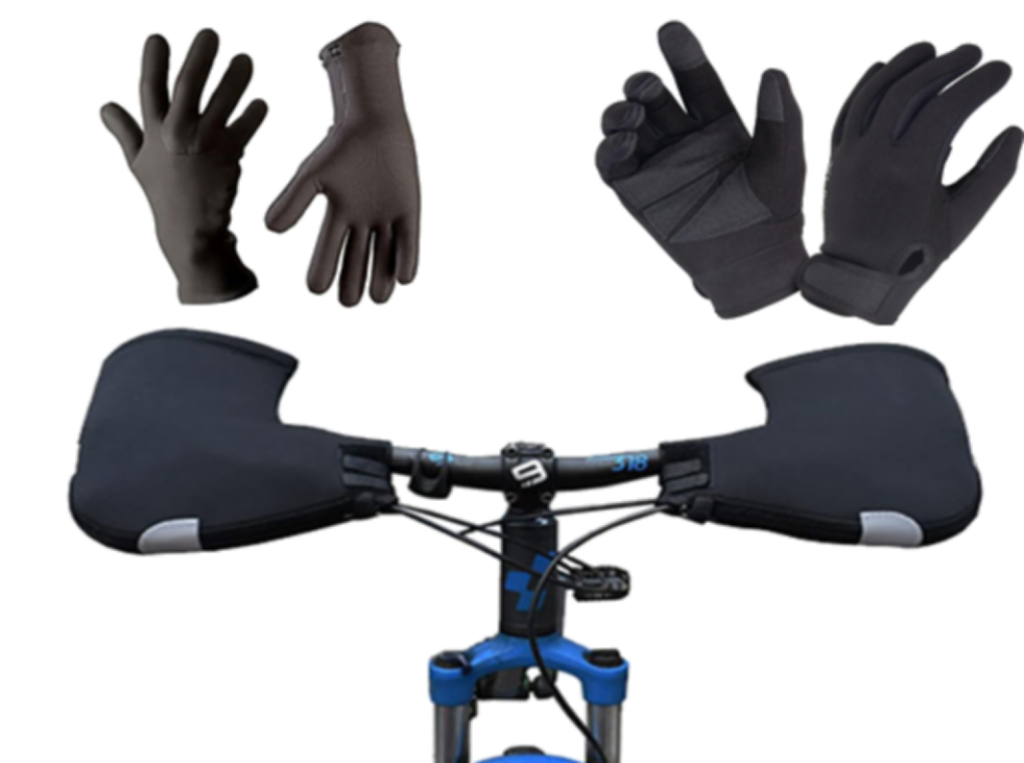
We ensure that every custom neoprene cycling gloves with high quality will stand out
Neoprene cycling gloves customization in various types,colors,pattern ,logo,and others design is what Oneier Company does best.
We offer OEM neoprene cycling gloves products in a broad range of types, artwork, packaging and other accessories.
Also, we have a strong fabric supply chain to provide the widest range of fabric customized services for your neoprene cycling gloves.
Our product has received 100% repurchase from our partners,Strict quality control reflected in product details.

Detail One

Detail Two

Detail Three

Detail Four
Discover the Ultimate Cycling Experience with Our Customizable Neoprene Cycling Gloves!
Product Characteristics:
- Superior Neoprene Material: Our wetsuit gloves are crafted from premium neoprene, a material renowned for its excellent insulation properties, durability, and elasticity. This ensures a product that offers both comfort and longevity.
- Eco-Conscious Manufacturing: We are committed to sustainable manufacturing practices, utilizing materials that are both stylish and environmentally friendly.
- Superior Grip and Control: Designed with textured palm surfaces, our gloves provide an enhanced grip, allowing cyclists to maintain control even in wet conditions, preventing slips and enhancing safety.
- Shock Absorption and Comfort: The gloves feature strategically placed padding that absorbs shocks and vibrations from the road, reducing hand fatigue and providing a more comfortable cycling experience.
- Weather Resistance: The neoprene material offers excellent protection against the elements, keeping your hands warm in cold weather and dry in wet conditions.
- Comprehensive Size Range: We offer a wide range of sizes, catering to cyclists of all ages and hand sizes. Our team can also work with you to develop custom sizes based on your specific requirements.
- Personalized Fit: Our gloves are designed to offer a personalized fit, with adjustable wrist straps that allow for easy adjustments, ensuring comfort and functionality during long rides.
- Versatile Usage: These gloves are not limited to cycling; they are also suitable for a range of outdoor activities, including hiking, running, and more, offering versatility and value.
- Professional and Amateur Cyclists: Whether you are a professional cyclist preparing for a race or an amateur enjoying a leisurely ride, our gloves provide the comfort and protection you need.
- Reflective Elements: For added safety, our gloves feature reflective elements that enhance visibility in low light conditions, promoting safer cycling experiences.
- Easy Maintenance: The neoprene material is easy to clean and maintain, promising a product that retains its quality and functionality over time.
- Cutting-Edge Printing Technologies: We offer a range of advanced printing technologies, including digital printing and screen printing, capable of creating vibrant, long-lasting designs. Our team can work with you to develop custom logos and designs that align with your brand identity.
Factory Advantages:
- Our factory offers the flexibility of low minimum order quantities, facilitating both small and large scale projects, and allowing for a more personalized service.
- Our production line is equipped with modern machinery and a skilled workforce, capable of adapting to diverse production demands with precision and efficiency.
- Our in-house design team offers complimentary services, collaborating with clients to develop products that meet their specific requirements and aesthetic preferences.
- We provide free samples to prospective clients, allowing them to assess the quality and craftsmanship of our products before committing to a bulk order.
- Our logistics team is committed to ensuring timely deliveries, working diligently to meet your timelines without compromising on product quality.
- We adhere to strict quality control protocols, conducting rigorous inspections at every stage of the production process to ensure the highest quality products.
- Our customer service team is available 24/7, ready to assist with any inquiries and provide support throughout the ordering process, ensuring a smooth and hassle-free experience.
Connect with Us Today!
Initiate an online consultation today to explore the vast possibilities and create a product that meets the exact needs of your target audience!
You just choose any types you prefer for your custom magnetic neoprene cycling gloves, and we will take care of the rest.
As a custom neoprene products manufacturer, Oneier has a team of 20+years experienced engineers, designers, sales consultants, and production team who have been engaged in the research and development of different neoprene products. We also have the ability and equipment to conduct advanced testing, production, and packaging. After all, our goal is to make your ideas into a reality.
The benefits And Value We can Bring To You
Custom
Sample making 1-3 day
Delivery
Fast delivery in 1-10 days helps you to take more share of the market
Quality
No complaints, no minor hassles for your customers, which will make your sales worry-free
Cost
Fully automatic equipment manufacturing process for each customer to save production costs and make it more competitive
Support
Put forward your ideas, we design to production completion, for you to save more intermediate costs
Certification
Qualified by BSCI ,Disney ,ISO9001,SGS
You can totally trust us with all certifications shown below
Certification Guarantee

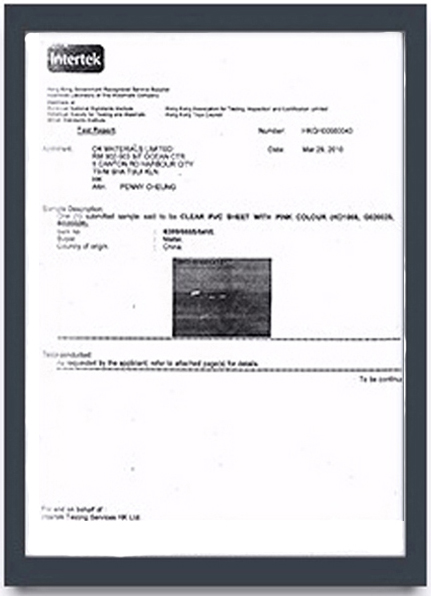
International standardized certification and recognition, so that our workflow, product quality, and management level maintain a high degree of worldwide consistency, ensuring the safe use of each customer.
After obtaining the certificate, enterprises are able to improve product quality by implementing standards, improving and perfecting management, so that each pipe household is satisfied.
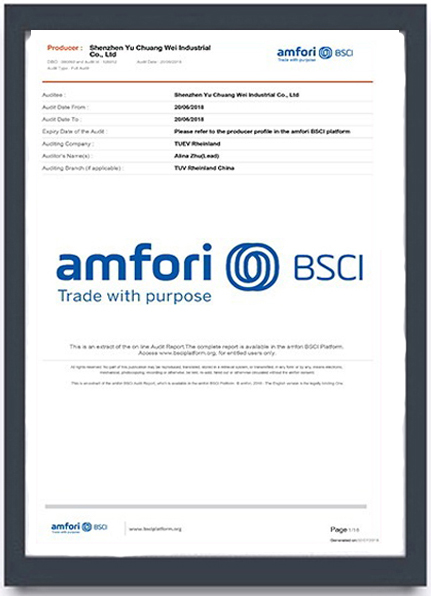
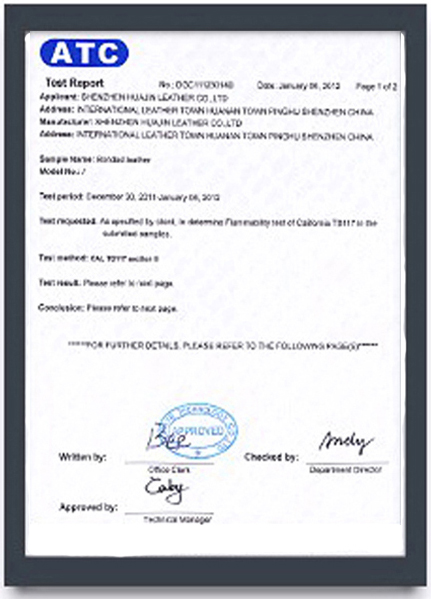
Official certification by third parties, so that products and services are secure and standardized, and every item delivered to the customer is guaranteed.
Hey, don't hesitate to try & feel the FREE SAMPLES before making up your decision
Cooperating Brand Partners Trusted
Your product is produced in reliable factory like our already cooperating international brand partners below:

Effective Production Process of Your Neoprene Products OEM
We believe quality is always the key to success, which includes a responsible approach to manufacturing, and controlling whole process.

1-Business Contact
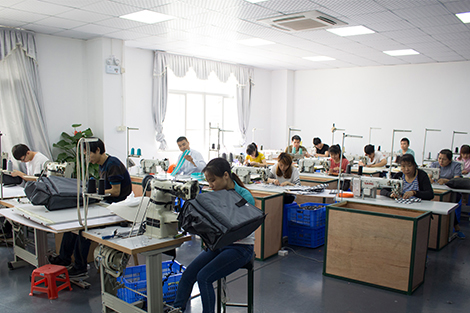
2-Sample Creation

3-Material Preparing

4-Material Cutting

5-Bulk Production

6-Quality Inspection

7-Product Packaging

8-Cargo Warehousing
What did our happy clients say?
Andrew Jackson
22nd Oct,2021 America
Due to policy reasons, my team and I have analyzed and developed the sales of neoprene koozie. The sales volume increased by 200% last month. It was beyond my expectation. The store staff told me that our this neoprene sleeves always attract the attention of customers. many old customers introduce their friends to come and purchase because of the good quality of our products.It’s true. Awesome, this works better than any other way of advertising. Thank you for providing us with the neoprene can cooler.


Carl Parein
13th Dec,2019 France
Because of the needs of the company’s project development, I selected many suppliers of neoprene koozie for comparative analysis. I was very lucky to find you on Google. I was surprised by the professionalism of your team. From the sharing of product expertise, the introduction of production technology, and the whole service of order production and delivery, the whole project has been well connected. Our products are sold well in the local market. Thank you very much, We will try to maintain cooperation with you all the time
Daniel Garcia
25th May,2010 Australia
I have chosen neoprene koozie as a new project for the company. In the early stages, I analyzed many Chinese suppliers, but only you mentioned,welcome me to visit your factory at any time. I will not hesitate to schedule and purchase a flight to your company’s factory to learn about your company’s products, production processes, and other information. Your reception service is very meticulous,That’s great. Your factory’s professionalism and service have given me confidence in managing my neoprene can coolers project well. thanks

More Things about Neoprene Cycling Gloves
What Are The Benefits of Neoprene Cycling Gloves Products?
Several advantages of using neoprene to make cycling gloves:
- Water Resistance: Neoprene is highly water-resistant, making it an excellent material for cycling gloves, particularly for riders who often face wet conditions. It helps keep hands dry in light to moderate rain or when riding through splashes.
- Thermal Insulation: One of the most notable features of neoprene is its thermal efficiency. The material traps body heat effectively, which can keep hands warm in cold weather. This is particularly beneficial for cyclists who ride in cool, damp climates.
- Windproof: Neoprene serves as a solid barrier against the wind, an essential feature for maintaining warmth in the hands during high-speed rides or in breezy conditions.
- Cushioning and Comfort: Neoprene has a cushion-like quality due to its flexibility and thickness, providing a comfortable layer between the hands and the handlebars, which can help absorb vibrations and reduce hand fatigue during long rides.
- Durability: Neoprene is a tough material that can withstand the wear and tear of regular cycling, including exposure to the elements and the constant grip and release on the handlebars.
- Grip: Many neoprene gloves come with textured palms and fingers, which enhance grip even when wet, giving cyclists better control of their bikes.
- Flexibility: Despite its insulating properties, neoprene remains quite flexible, which is crucial for allowing full range of motion in the fingers for gear shifts and braking.
- Buoyancy: While this is not a primary concern for cycling, the buoyant nature of neoprene can add a layer of safety for riders who may have to cross bodies of water or are engaged in triathlon activities.
- Ease of Maintenance: Neoprene gloves are generally easy to clean, often requiring just a simple rinse and air dry, making them convenient for cyclists who train regularly.
- Versatility: Neoprene’s properties make it suitable not just for cold, wet weather, but also for use in a variety of outdoor sports and activities, which may appeal to multi-sport athletes.
However, it’s important to balance these advantages with considerations of breathability and dexterity, as neoprene is not as breathable as some other materials and may not be suitable for all temperatures or endurance rides where hands might sweat excessively. Additionally, the thickness that provides insulation and comfort can reduce the tactile feedback that some cyclists prefer for bike handling. Therefore, while neoprene cycling gloves are advantageous for certain conditions and preferences, the choice of glove should be tailored to the specific needs and circumstances of the ride.
Are Neoprene Gloves Good For Cycling?
Neoprene, a type of synthetic rubber, is well-regarded for its thermal insulation properties, which is why it’s commonly used in aquatic sports gear. The material works by trapping a thin layer of water between the glove and the skin. This water is then warmed by body heat, forming an insulating barrier against the cold.
For cycling, the effectiveness of neoprene gloves largely depends on the environmental conditions and the duration of the ride. In active sports like cycling, the body generates a considerable amount of heat, which can mean that neoprene gloves will keep hands warm in cool, but not freezing conditions. They are particularly useful in wet conditions as they continue to provide thermal insulation even when wet.
However, there are some limitations when using neoprene gloves for cycling, especially during long rides in temperatures around freezing (0°C). The problem arises from the fact that neoprene is not breathable, which means that sweat from the hands cannot easily escape. This can lead to the hands becoming wet from perspiration, and in freezing temperatures, the moisture can make hands colder instead of warmer. Additionally, if the external temperature is too low, the trapped layer of water or sweat may not warm up sufficiently to provide enough insulation, leading to cold hands.
Another factor to consider is the thickness of the neoprene. Thicker neoprene provides more insulation but at the cost of reduced dexterity, which is important for handling bike controls. Conversely, thinner neoprene improves dexterity but may not offer enough protection from the cold on long rides.
For cyclists, neoprene gloves might be a good option for short to medium rides in wet and cool conditions, but for long steady rides in temperatures close to freezing, gloves with breathable, windproof, and waterproof properties might be more effective. Gloves specifically designed for winter cycling often feature a combination of materials that optimize both insulation and breathability to keep hands warm and dry throughout the ride.
Are Neoprene Gloves Good for Winter Cycling?
Neoprene, a synthetic rubber material, is a popular choice for winter cycling gloves due to its inherent ability to resist water and wind while providing insulation. Here’s a scientific and user-friendly explanation of why neoprene gloves are good for winter cycling, with certain caveats:
Water Resistance: Neoprene is inherently water-resistant, which means it can prevent rain or snow from soaking through to your skin. This property is particularly beneficial in winter cycling conditions, where hands can get wet from road spray or precipitation.
Thermal Insulation: Neoprene is a closed-cell foam, meaning it has a multitude of tiny air bubbles trapped within its structure. These bubbles help to retain heat, making neoprene an excellent insulator. When cycling in winter, the body generates heat, which is trapped by the neoprene, thus maintaining warmth in the hands.
Windproof Qualities: Neoprene’s dense structure makes it an effective barrier against the wind, a common challenge in winter cycling that can drastically reduce hand temperature.
However, there are some limitations to the use of neoprene gloves in winter cycling:
Breathability: Neoprene is not very breathable, which means that it can cause hands to sweat during prolonged activity. This sweat can reduce the insulating properties of the gloves as moisture conducts heat away from the body quicker than air.
Temperature Range: While neoprene gloves are effective in cool to moderately cold conditions, they may not provide adequate insulation in extremely cold temperatures, especially if the gloves are not lined with an additional insulating material.
Comfort and Features: Some neoprene gloves are quite basic and lack additional features that could improve comfort and functionality, such as padding, cuff adjustments, or touchscreen compatibility. For longer rides, these features can significantly enhance the cycling experience.
In summary, neoprene gloves can be an excellent option for winter cycling, offering protection against wet and cool conditions. They work best in temperatures that are cold but not freezing. For riders facing sub-zero temperatures, gloves with additional insulating layers, breathability features, and ergonomic designs may be necessary to ensure comfort and warmth throughout the ride. When recommending neoprene gloves for winter cycling, it’s important to consider the specific environmental conditions, the duration of the ride, and the cyclist’s personal comfort preferences.
Custom Neoprene Cycling Gloves Types
With extensive experience in the production and research of neoprene cycling gloves, I can provide you with a detailed breakdown of the various types of neoprene cycling gloves available in the market, their characteristics, and the specific use-cases they cater to:
- Standard Neoprene Cycling Gloves:
- Characteristics: Made with a single layer of neoprene, they offer basic water resistance and windproof qualities. Typically, these gloves will have a fleece or synthetic lining for added warmth.
- Best For: Mild to cool weather conditions, where additional warmth and protection from the wind and rain are needed without too much bulk.
- Thermal Insulated Neoprene Gloves:
- Characteristics: These gloves feature a thicker neoprene or a combination of neoprene with thermal linings such as Thinsulate. They are designed to provide maximum warmth.
- Best For: Cold weather cycling, where maintaining hand warmth is critical. Not ideal for warmer conditions as they may cause overheating and sweating.
- Textured Grip Neoprene Gloves:
- Characteristics: Equipped with textured palms and fingers for enhanced grip. Some may use rubberized or silicone patterns to improve handlebar control.
- Best For: Wet weather cycling, where maintaining a secure grip on the handlebars is a challenge due to slippery conditions.
- Convertible Neoprene Gloves (Lobster/Fingerless):
- Characteristics: These gloves have a design that allows fingers to group together for warmth (like in lobster gloves) or can convert to fingerless for better dexterity.
- Best For: Versatile weather conditions and for cyclists who need quick transition between warmth and dexterity.
- High-Visibility Neoprene Gloves:
- Characteristics: Made with bright colors and reflective materials incorporated into the neoprene to enhance visibility in low-light conditions.
- Best For: Early morning or late evening rides, foggy weather, or any situation where being seen by other road users is a priority.
- Breathable Neoprene Gloves:
- Characteristics: These incorporate ventilated neoprene or breathable panels to reduce sweat build-up during intense rides or in slightly warmer weather.
- Best For: Riders who experience hand sweating but still require the water-resistant and insulative benefits of neoprene.
- Touchscreen Compatible Neoprene Gloves:
- Characteristics: Fitted with conductive material on the fingertips, these gloves allow for the use of touchscreen devices without needing to remove the gloves.
- Best For: Cyclists who use smartphones or GPS devices for navigation and wish to do so without exposing their hands to the elements.
- Ergonomically Padded Neoprene Gloves:
- Characteristics: These gloves come with strategic padding, often gel or foam, to cushion against vibrations and impacts.
- Best For: Long-distance or rough-terrain cyclists who need extra palm protection to prevent fatigue and discomfort.
- Triathlon/Transition-Friendly Neoprene Gloves:
- Characteristics: Designed for quick removal during races, they may have longer cuffs with easy-pull tabs or zippers.
- Best For: Competitive cyclists or triathletes who need to quickly transition between sports disciplines without wasting time.
- Eco-Friendly Neoprene Gloves:
- Characteristics: Made from eco-friendly alternatives like limestone neoprene, these are for environmentally conscious consumers.
- Best For: Riders looking for a more sustainable option without compromising on performance.
When selecting neoprene cycling gloves, it’s important to consider the specific conditions you’ll be riding in, as well as personal preferences for comfort, dexterity, and breathability. Moreover, advances in materials and design are continuously improving the functionality of neoprene gloves, addressing previous limitations and enhancing rider experience.
How Long Do Neoprene Gloves Last?
Neoprene gloves are crafted from a synthetic rubber compound that offers a combination of flexibility, chemical stability, and durability, which contributes to their longevity. The expected lifespan of neoprene gloves can be influenced by several factors:
Storage Conditions: When stored properly in a cool, dry place away from direct sunlight and ozone-generating equipment, neoprene gloves can last up to five years without significant degradation. Prolonged exposure to heat, light, and ozone can cause the neoprene material to crack, become brittle, or lose its elasticity.
Frequency of Use: Gloves used regularly will experience wear and tear more rapidly than those used infrequently. The lifespan of a pair of neoprene gloves under regular use can vary greatly depending on the intensity of the activities they are used for.
Exposure to Chemicals: Neoprene is resistant to many chemicals, but prolonged or frequent exposure to certain solvents, oils, and acids can cause the material to break down faster.
Care and Maintenance: Regular cleaning and proper drying can extend the life of neoprene gloves. Gloves should be rinsed in fresh water after use, especially if they have been exposed to salt water, chlorine, or industrial contaminants.
Quality of the Gloves: The manufacturing quality and thickness of the neoprene also play a significant role in determining how long the gloves will last. Higher quality gloves with reinforced seams and thicker material may last longer than thinner, lower quality versions.
In real-world conditions, neoprene gloves might start showing signs of wear such as loss of flexibility, fading, or tearing at stress points within a few seasons of active use. For applications that subject the gloves to constant stress, such as diving or industrial work, users might find that they need to replace their neoprene gloves more frequently, potentially every year or two.
To conclude, while neoprene gloves have a potential shelf life of up to five years when stored under optimal conditions, the actual usable life of a pair of gloves is highly dependent on how they are used, stored, and cared for. Users should regularly inspect their gloves for signs of aging or damage and replace them when necessary to ensure continued performance and protection.
Considerations When Buying Neoprene Cycling Gloves
When considering the purchase of neoprene cycling gloves, it’s important to take into account several key factors that will affect their performance, durability, and overall suitability for your cycling needs. Here’s what to look for based on my experience in the production and research of neoprene cycling gloves:
- Thickness of Neoprene:
- Gloves come in various thicknesses, usually measured in millimeters. Thicker neoprene provides better insulation but at the cost of flexibility and tactile feel. Choose based on the typical weather conditions you cycle in.
- Fit and Comfort:
- Ensure the gloves fit well without being too tight, which can restrict blood flow and lead to cold hands, or too loose, which can reduce control and dexterity.
- Grip:
- Look for gloves with textured palms and fingers that offer a secure grip, which is especially important in wet conditions.
- Breathability:
- While neoprene isn’t the most breathable material, some gloves feature ventilated panels or breathable linings to help wick moisture away from the skin.
- Waterproofing:
- Neoprene is water-resistant, but seams and joins can let water in. Gloves with sealed or taped seams will offer better waterproofing.
- Warmth:
- Gloves with thermal linings or additional insulation materials can provide extra warmth, but remember that hands can overheat and sweat, reducing the insulative properties.
- Touchscreen Compatibility:
- For those who use GPS or smartphones while cycling, some neoprene gloves come with touchscreen-compatible fingertips.
- Cuff Length and Closure:
- Longer cuffs provide more coverage and warmth. Adjustable closures, like Velcro straps, can help to secure the gloves and prevent cold air from entering.
- Durability:
- Reinforced areas, particularly around the palm and fingers, can extend the life of the gloves against wear and tear.
- Visibility:
- If you often cycle in low-light conditions, reflective materials or bright colors can enhance safety by making you more visible to others.
- Ease of Cleaning:
- Cycling gloves can get dirty. Look for gloves that can be easily cleaned without degrading the neoprene material.
- Ergonomic Design:
- Some gloves come with padding or ergonomic designs to reduce fatigue during long rides.
- Price:
- Neoprene gloves can vary widely in price. Higher cost does not always equate to better quality, so assess whether the glove’s features justify its price.
- Brand and Reviews:
- Research brands and read consumer reviews to assess the performance and reliability of the gloves.
- Environmental Conditions:
- Tailor your choice to the specific environmental conditions you expect to encounter. Gloves that are suitable for rainy Pacific Northwest conditions may not be the best choice for dry, cold Northeast winters.
- Cost and Budget:
- Consider your customers’ budget when selecting custom cycling gloves. Look for manufacturers that offer competitive prices and bulk discounts, so you can provide your customers with quality facial care at an affordable price. At Oneier,we offer high-quality cycling gloves including Various styles at an affordable price.
17. Bulk Purchasing Options:
- Minimum Order Quantity: Understand the minimum number of units (MOQ 50-100)required to avail bulk pricing.
- Customization in Bulk: Ensure that customization options are still available when purchasing in bulk.
18. Quality Assurance:
- Make sure to purchase Neoprene cycling gloves from a reputable manufacturer like Oneier that has stringent quality control measures in place. This ensures that the products you are selling meet safety and efficacy standards and will provide your customers with the best results possible.
By carefully considering these factors, you can select neoprene cycling gloves that will provide the best balance of warmth, protection, and performance for your specific cycling needs.
What is The Process For Customizing Neoprene Cycling Gloves
Customizing neoprene cycling gloves involves several steps, from design and material selection to prototyping and production. Here’s a general process that a manufacturer or a brand might follow to customize neoprene cycling gloves:
- Needs Assessment:
- Determine the specific needs and requirements for the gloves, such as the climate they are designed for, the type of cycling (mountain biking, road cycling, etc.), and any special features like touch screen compatibility or reinforced padding.
- Design Specification:
- Create detailed design specifications, including the glove’s shape, color, thickness of neoprene, grip patterns, cuff style, and any additional materials for insulation or reinforcement.
- Material Selection:
- Choose the type and quality of neoprene, considering factors such as flexibility, warmth, and waterproofing. Select additional materials like thermal liners, grip textures, and closures.
- Prototyping:
- Develop a prototype based on the design specification. This might involve computer-aided design (CAD) and cutting neoprene using a CNC machine for precision.
- Sample Testing:
- Test the prototype under real-world conditions to evaluate fit, comfort, durability, and performance. Collect feedback from testers and make any necessary adjustments.
- Design Finalization:
- Finalize the design incorporating any changes from the prototype testing phase.
- Pattern and Template Creation:
- Create patterns for cutting the neoprene and other materials. Templates are essential for ensuring consistency across multiple sizes.
- Cutting and Assembly:
- Cut the neoprene and any other fabric or reinforcements to size and begin assembling the gloves. This will often involve sewing, gluing, or heat-welding seams.
- Seam Sealing:
- If the gloves need to be waterproof, seal the seams using seam tape or liquid sealant.
- Quality Control:
- Inspect each glove for defects and ensure that all products meet the quality standards set out in the design specification.
- Packaging and Branding:
- Add any branding, such as logos or labels, and package the gloves for distribution.
- Production Scaling:
- Once the final sample is approved, move to full-scale production while maintaining quality control checks.
- Marketing and Sales:
- Develop marketing materials and sales strategies to promote the custom gloves.
- Feedback and Iteration:
- After the gloves have been in use, collect customer feedback and prepare for future iterations and improvements.
Customization can be a complex process, particularly if the gloves include advanced features or if they are designed for specific conditions. The process involves a close partnership between designers, engineers, and cyclists to ensure the final product meets the intended needs.
Is Neoprene FDA Approved?
Neoprene, a synthetic rubber, can achieve FDA approval when it is manufactured using ingredients that meet the specific standards and regulations set by the U.S. Food and Drug Administration (FDA). This ensures that the material is safe for applications that involve direct or indirect contact with food.
Compliance with FDA Guidelines: For neoprene to be FDA approved, it must be produced from ingredients that are on the FDA’s list of approved substances. This is crucial as it ensures that the material does not contain any components that could be harmful when in contact with food or beverages.
Color and Appearance: FDA-approved neoprene is generally available in an off-white color. The color is a distinguishing feature that helps in identifying FDA-compliant materials, ensuring that they are easily distinguishable from non-compliant materials.
Intended Use: FDA-approved neoprene is specifically designed for repeated food exposure. This makes it a safe and reliable choice for applications in the food processing industry, where materials are constantly in contact with different food products.
Oil Resistance: One of the key characteristics of FDA-approved neoprene is its excellent resistance to oils. This property is particularly important in food processing and industrial applications where exposure to oils and fats is common. The material’s ability to resist these substances ensures that it maintains its integrity and does not degrade over time, even under constant exposure.
Preference in Food Processing and Industrial Applications: Due to its compliance with FDA standards, as well as its resistance to oils and suitability for repeated food contact, FDA-approved neoprene is a preferred material in the food processing industry. It is also commonly used in various industrial applications where safety and compliance with health standards are paramount.
In summary, neoprene can be FDA approved when produced with specific, FDA-compliant ingredients, ensuring its safety for use in food-related applications. Its excellent oil resistance and suitability for repeated food contact make it a preferred material in both the food processing industry and various industrial contexts.
Most Asked Questions About OEM ODM Custom Cycling Gloves Product Line
Are you interested in creating a custom neoprene cycling gloves product but don’t know where to start?
Here are 10 FAQs to help guide you through the process:
- What customization options are available for neoprene cycling gloves? We offer a range of customization options including glove thickness, color, branding, grip pattern, padding, wrist closure style, and touchscreen compatibility. Each aspect can be tailored to meet your specific design and performance criteria.
- Can we have our logo and branding on the gloves? Absolutely, we can integrate your logo and branding elements into the glove design. This can be done through printing, embossing, or stitching, depending on your preferences and the chosen materials.
- What is the minimum order quantity for custom gloves? Our minimum order quantity for custom neoprene cycling gloves typically starts at 500 pairs. This quantity ensures cost-effectiveness while allowing for a comprehensive range of custom features.
- How do you ensure the gloves are of high quality? Quality assurance is integral to our manufacturing process. We conduct material testing, in-process inspections, and final product assessments to ensure each glove meets our strict standards for durability, comfort, and performance.
- What is the lead time for custom glove orders? The lead time can vary depending on the complexity of the design and the order size. Generally, it ranges from 4 to 8 weeks from the finalization of the design to the completion of production.
- Can we order samples before placing a bulk order? Yes, we highly recommend ordering samples. It allows you to evaluate the design, fit, and materials. Upon approval of the samples, we’ll proceed with the bulk order.
- Are there eco-friendly material options for neoprene gloves? We are committed to sustainability and offer neoprene alternatives made from limestone or recycled rubber, which have a reduced environmental impact compared to traditional petroleum-based neoprene.
- How can we ensure the gloves fit a wide range of hand sizes? We use an extensive sizing chart and can produce gloves in a full range of sizes from XS to XXL. We can also work with you to refine the fit based on target demographics or specific fitting requirements.
- What kind of padding can be added for extra comfort and grip? We can incorporate various types of padding, such as foam, gel, or silicone, to enhance comfort and grip. The padding can be strategically placed in high-pressure zones for added support.
- How do we start the customization process for neoprene cycling gloves? To start, you’ll need to provide us with your design specifications, desired features, and order quantities. Our team will then work with you to create initial design drafts, choose materials, and develop prototypes for testing and approval.
Keep in mind that these answers are structured to offer informative and comprehensive insights while also considering the most common concerns a buyer might have when looking to source custom neoprene cycling gloves.
Start Your Custom Neoprene Products Business Today!

Anna
Sales Manager

Grace
Sales Manager

Julie
Sales Manager

Mike
Sales Manager

Nancy
Sales Manager
We are here for all your business needs and questions.







